On test: Kverneland’s new five-furrow 2300S plough
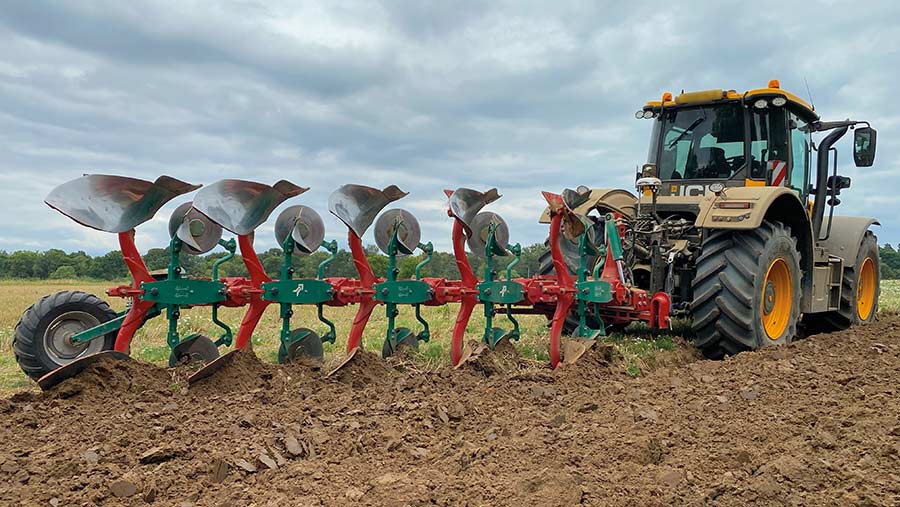 © MAG/Oliver Mark
© MAG/Oliver Mark Decades pass with little change to the humble plough, so a raft of major updates to Kverneland’s mid-range models was big news for buyers keen to turn a more consistent furrow.
Most of the novelties were first debuted on the Norwegian firm’s high-tech, Isobus-only i-Plough five years ago and are designed to offer a simpler and slicker means of altering the settings to improve performance.
See also: On test: Kverneland’s 2500 S five-furrow iPlough
These include quicker adjustment of the skimmers and leaf-sprung auto-reset system, and lighter, stronger legs that reduce the likelihood of trash balling up.
The model tested here is part of the three- to five-furrow 2300S range, which is effectively a replacement for old-school EGs. It comes with a 230hp-rated headstock, 100x200mm main frame and hydraulic vari-width.
Two other plough ranges have had the same treatment – the four- to six-furrow 3300S and the 3400S, which is available with five, six or seven bodies and can be used on-land or in-furrow.
Kverneland 2300 V five-furrow
- Headstock rating 230hp
- Point-to-point clearance 85cm or 100cm
- Furrow width adjustment 30-55cm
- Underbeam clearance 80cm
- Weight 1,630kg
- Lift requirement 5,100kg
- Base price £40,062
- Price as tested £50,711
Legs
The most significant change is the introduction of the i-Plough’s hollow “aero-profile” legs, which are positioned further away from the landside to reduce wear.
These are lighter than before and, because their construction requires half the amount of welding, should also be stronger.
With more customers ploughing in thick cover crops, they now offer an 80cm underbeam clearance and have a smoother, tapered profile from front to back that encourages trash to flow steadily without tangling and blocking.
Protection comes from KV’s auto-reset system, with the trip limit adjustable in 100kg increments to a maximum of 1,600kg by adding extra leaf sections.
This process can be done in a couple of minutes by unwinding two plastic-capped bolts, rather than having to reach for a box of spanners. Some operators might find it useful to add an extra leaf to the front furrow, which we found tripped more frequently in rock-hard ground.
Skimmers
A new mounting assembly has also made the skimmers quicker to adjust.
By loosening a single locking bolt on each leg, operators can raise or lower both the left and right bodies simultaneously with the twist of a spanner.
The locking bolts then pinch into locator detents on the legs to clamp them in position, eliminating the rattle caused by the sloppy fit of a hole-and-pin system and helping to deliver a more consistent performance.
A wider range of fore and aft adjustment means it’s possible to widen the gap between the skimmer and mouldboard, too.
This gives the trash a split-second longer to land in the furrow bottom which, in good conditions, allows for a faster forward speed.
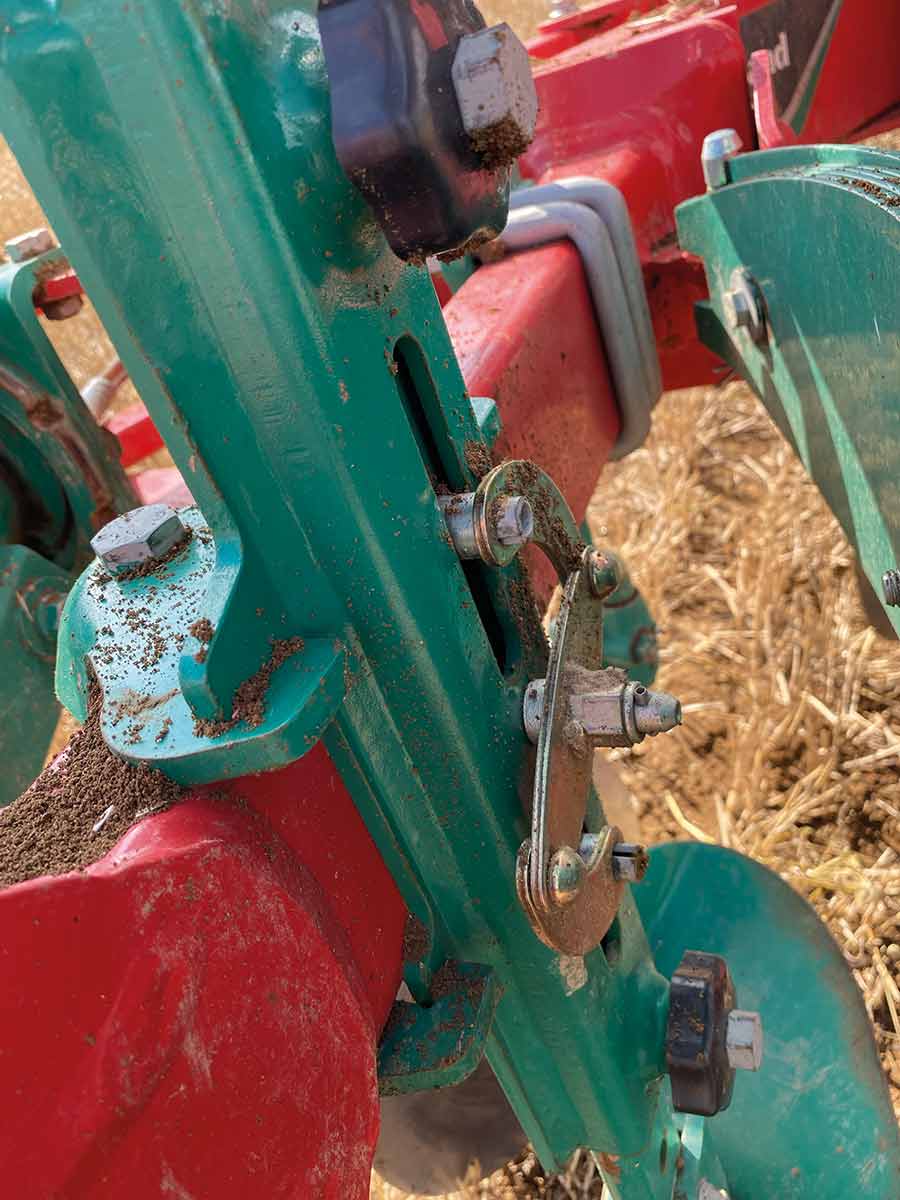
© MAG/Oliver Mark
And although we didn’t tamper with it, skimmer pitch can be altered through an elongated slot on the leg to increase or decrease the ferocity of soil throw.
Our liberally specced model also had cutting discs on every furrow. This is a luxury most easily justified by those ploughing a significant amount of grassland, where the discs help slice through surface material to prevent it being dragged from the neighbouring furrow.
Options include a plain or serrated edge and 45cm or 50cm sizes, but a more popular setup is to have a single disc on the rear body to leave a clean and tidy furrow wall.
Wearing metal
KV opts for quick-fit points that can be changed with a hammer and chisel, saving operators doing battle with worn nuts and bolts.
The downside is that they’re not reversible, though they can be switched between left and right bodies.
Carbide tips are available as an upgrade, with a genuine set for a five-furrow plough priced at £2,500. Although they are estimated to last at least 10 times longer, the high upfront cost means they’re only likely to be taken up by farms on particularly abrasive soil.
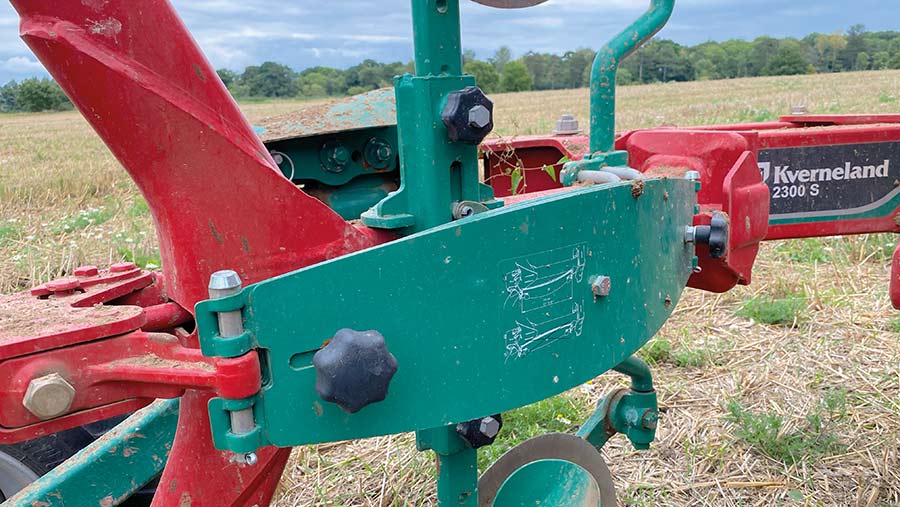
© MAG/Oliver Mark
Our test model was fitted with the firm’s number 28 bodies, which will just about handle tractor tyres up to 710mm wide and can be set to work anywhere between 15-30cm deep.
Beyond that, soil will start tumbling over the back of the mouldboard, so the number 38s are a better bet.
These have a deeper profile and, according to KV, can be dragged down to 38cm while still leaving a clean furrow bottom.
Rear depth wheel
The turnover mechanism on the 2300S sees the bodies swing over the rear depth wheel, so it doesn’t matter if it catches the ground in the process.
Three wheels are available – 280mm-wide (the most popular, and the one fitted to our plough), 340mm and 420mm – and mechanical depth control is standard.
However, there’s the option of replacing the turnbuckle with a hydraulic ram, allowing adjustments to be made from the cab.
At £4,731, it’s a serious indulgence on a five-furrow model and, with it specced, means you’ll need four double-acting spools – plus a fifth if you have a hydraulic top link.
It’s a more appealing prospect on six- and seven-furrow versions, where it can hold the rear bodies out of the ground at the start of a bout to produce a squarer entry and a less choppy headland, or on the final pass to avoid leaving a huge gully.
It also features a “memory” setting, which is engaged using a hydraulic tap located on the main beam. In the open position, the ram can run through a full stroke to maximum and minimum depth; locking it limits travel in the same way fitting a set of ram collars would.
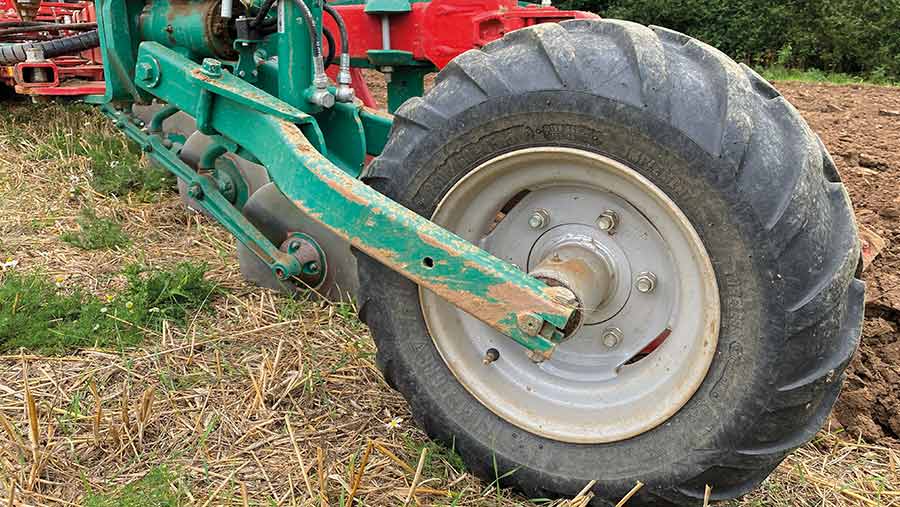
© MAG/Oliver Mark
On the road
Another optional feature of more benefit on bigger models is KV’s Trailer Transport Solution.
Removing the two heavy-duty pins that lock the cross-shaft square in its work position allows the headstock to pivot on a turntable through 45deg in either direction.
So, when the top link is detached with the plough in its butterfly position, it will run on the rear land wheel to follow the tractor like a trailer.
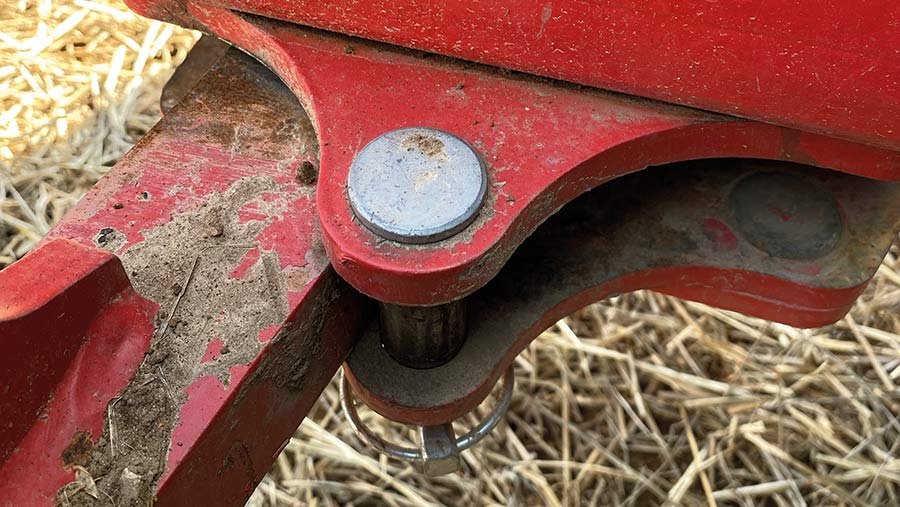
© MAG/Oliver Mark
However, it costs £2,330 and, like most of the other optional extras, is better suited to six- and seven-furrow models in the 3300S and 3400S ranges.
The model we tested travelled perfectly well with the bodies narrowed in the standard mounted position.

